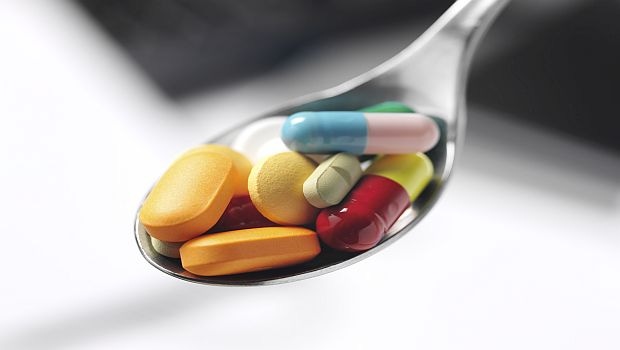Emphasis has been placed on innovative ways to deliver nutraceutical ingredients while maintaining safety and effectiveness. Both fast-dissolving tablets and stick packs offer several unique advantages in comparison to traditional tablet and powder manufacturing.

The term “nutraceutical" is a hybrid of the words “nutrition" and “pharmaceutical" coined in 1989 by Stephen DeFelice. It is a broad term used to describe any product known to have health benefits in addition to basic nutritional value. Nutraceuticals can include a diverse group of ingredients ranging from vitamins and minerals to enzymes, amino acids and glandular products. These ingredients widely differ in their physicochemical properties, which can present numerous formulation challenges when designing optimal delivery systems.1,2
Delivery systems are the means by which maximum nutritional benefits are achieved from nutraceuticals. An effective delivery system should be designed to promote the efficacy of nutrients by increasing bioavailability and minimizing loss of nutrients. Due to various intrinsic degradation and metabolic processes in the body, this goal may be difficult to achieve in formulation and manufacturing.
In recent years, a great deal of emphasis has been placed on innovative ways to deliver nutraceutical ingredients while maintaining safety and effectiveness. Although conventional delivery systems such as tablets, hard shell capsules and powders are consistent and cost effective to manufacture, customer demand drives the desire for more innovative ways to achieve this objective. Manufacturers often see alternative delivery systems as another way to distinguish their products to gain competitive edge. Innovation in this area is well justified and will continue as long as there is market demand.
Until now, a variety of novel delivery systems have been developed and evaluated for nutrient delivery applications.3,4 The list of modern delivery systems that are successfully developed and are currently available in the market is ever growing. The list may include but is not limited to functional beverages, stick packs, fast melting tablets, powder sachets, liquid concentrates, dissolving strips, gels, gummies, chewing gums, liquid filled hard shell capsules, microcapsules, capsules within capsules, lozenges and liposomes.5,6,7 Even alternatives to traditional tableting such as enteric and other coatings, timed-release tablets and effervescent tablets are now available. Each of these delivery systems has its own merits and demerits (e.g., liposomes are specifically designed to deliver hydrophobic ingredients, and similarly, liquid concentrates are mostly used for stable, hydrophilic ingredients). Taste and flavor also play an important role when considering systems such as gummies, functional beverages and other oral products that are not immediately swallowed.
Recently, fast-dissolving oral delivery systems, also referred to as fast-disintegrating, rapid-dissolving and oro-dispersible tablets (European Pharmacopoeia), have gained popularity among consumers.8 Fast-dissolving delivery systems have advantages over conventional oral dosage forms with improved consumer compliance, convenience and, in some cases, improved bioavailability. The demand for this type of delivery method has grown, especially in the pediatric and geriatric markets. These new tablets not only demonstrate stability of the product and convenience for consumers, but are also practical to manufacture. Since rapid releasing tablets are not designed to be swallowed, no liquid intake is necessary. These popular dosage forms are most commonly manufactured by freeze-drying methods, direct compression or molding technologies. Tablets produced by molding or freeze-drying are relatively more friable and highly sensitive to moisture. Special packaging is required to protect these tablets from moisture and excessive handling during packaging and shipping. Direct compression tableting remains to be the method of choice in the supplement industry because of its low cost and fast processing time.
Typical formulation of fast-melting tablets consists of super disintegrants, water soluble excipients, sweetening and flavoring agents combined with extremely efficient lubricants. Disintegrants play a major role in the dissolution process of tablets, therefore the type and amount of disintegrant is paramount for ensuring success of the tablet’s intended purpose. The disintegrating efficacy is strongly affected by hardness and size of the tablet. Small- to medium-sized tablets with low hardness are recommended for this type of delivery system. At this time there are no official compendial tests available to test disintegration of these tablets, but it is accepted that this type of tablet should dissolve within 20 to 30 seconds.
Stick pack delivery method is another relatively new technology gaining popularity to deliver powders, semisolids and liquids. Originally developed in Japan by Sanko Machinery Co. Ltd., to package sugars and artificial sweeteners, stick pack applications have expanded into almost every industry, notably convenient, single-serving packaging.9 Stick packs typically consist of a powder blend containing active nutrients, sweetening, coloring, flavoring and masking agents. There are some considerations when using this technology. Taste and mouth feel play a vital role during product development and manufacturers should be aware of the powder rheology. Selection of packaging film and seal can be especially important when products are hygroscopic in nature. Proper film will provide a strong barrier and protection against moisture and oxidation.
Both fast-dissolving tablets and stick packs offer several unique advantages in comparison to traditional tablet and powder manufacturing. Consumer convenience and ease of portability has grown to be a dominate need in today’s nutraceutical market.
For a list of references, email [email protected].
Naeem Shaikh, Ph.D., leads the formulation team and drives the research that helps inspire and propel the innovative product momentum at National Enzyme Company (nationalenzyme.com). As an accomplished and published doctor, Shaikh leverages 28 years of renowned experience, with previous research ranging from micro-encapsulation to release methods for solid and liquid dosage forms.
About the Author(s)
You May Also Like




.png?width=800&auto=webp&quality=80&disable=upscale)